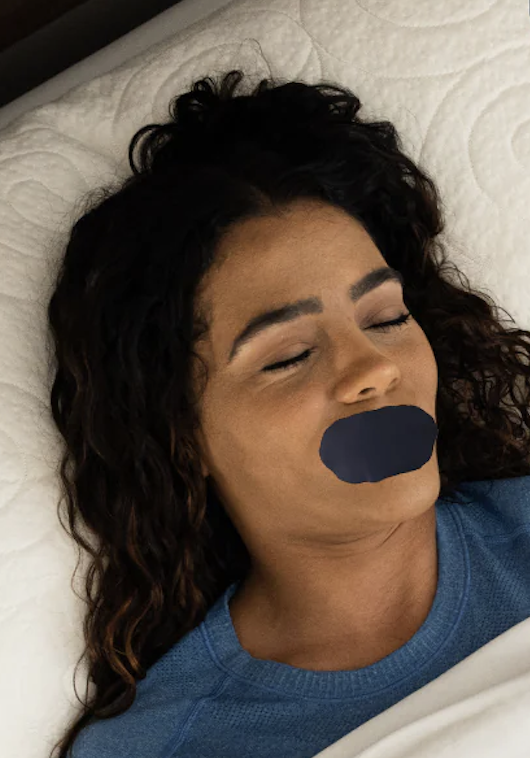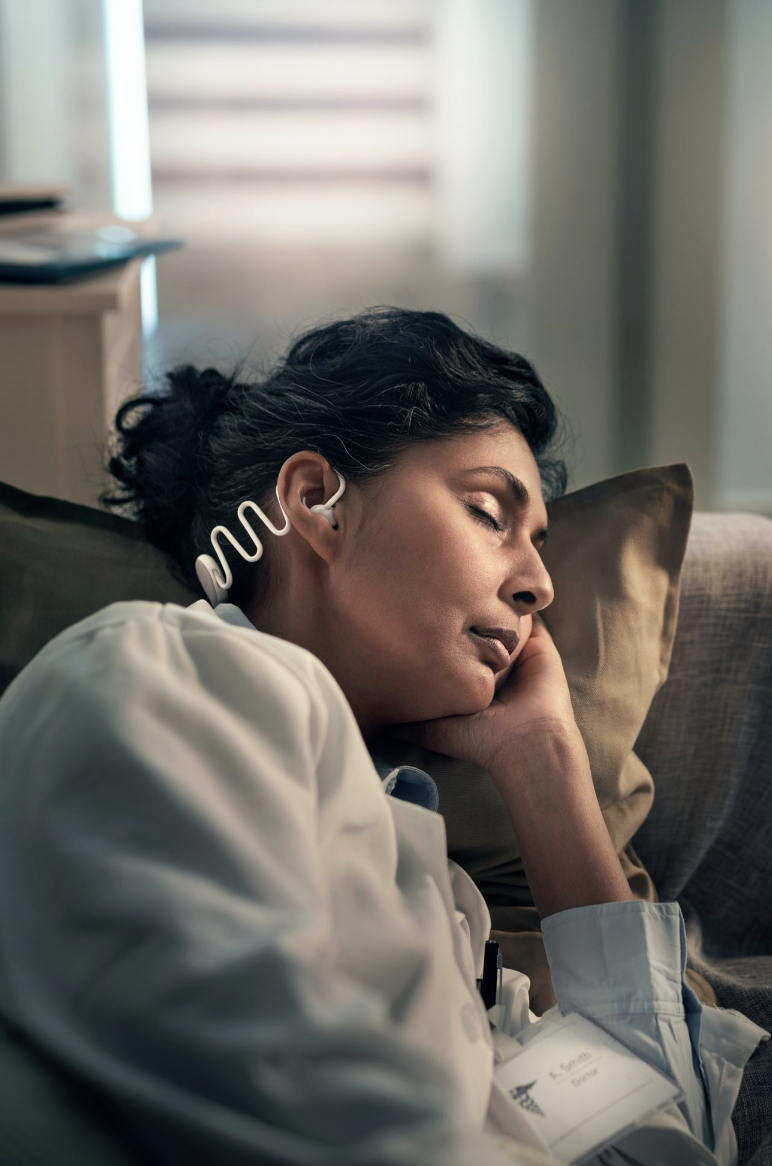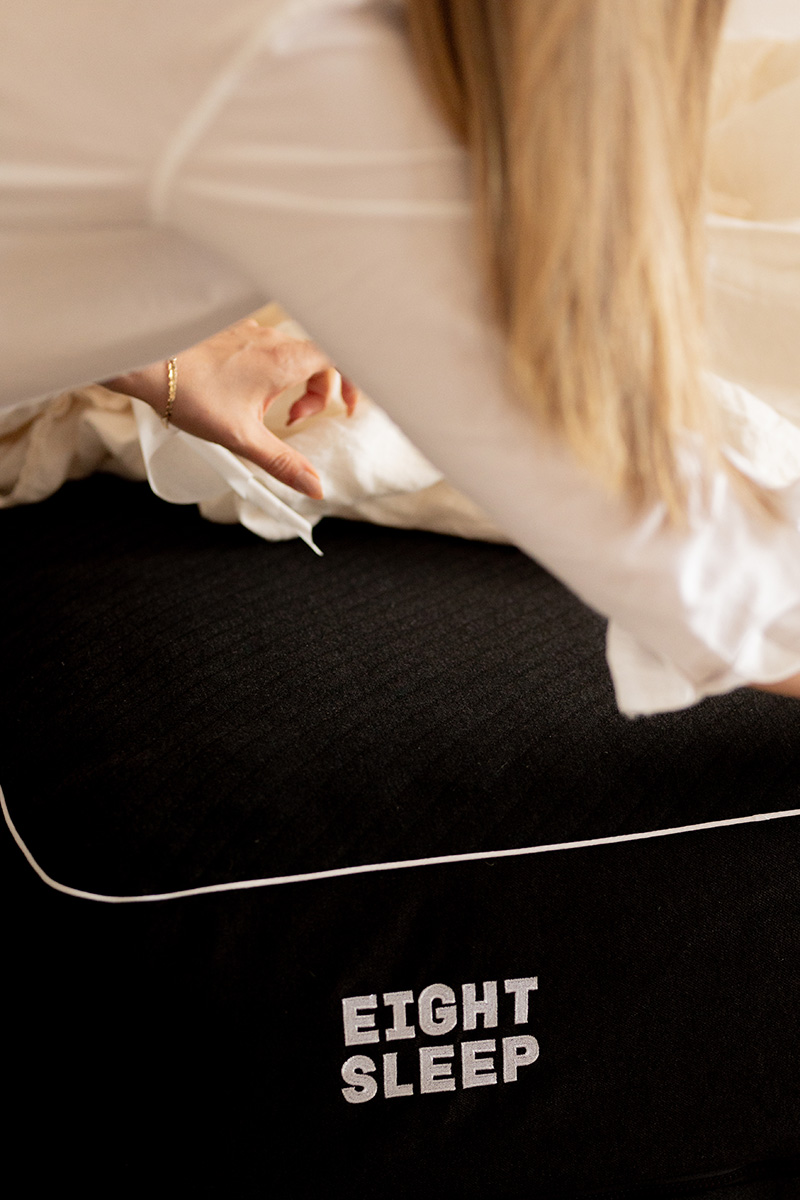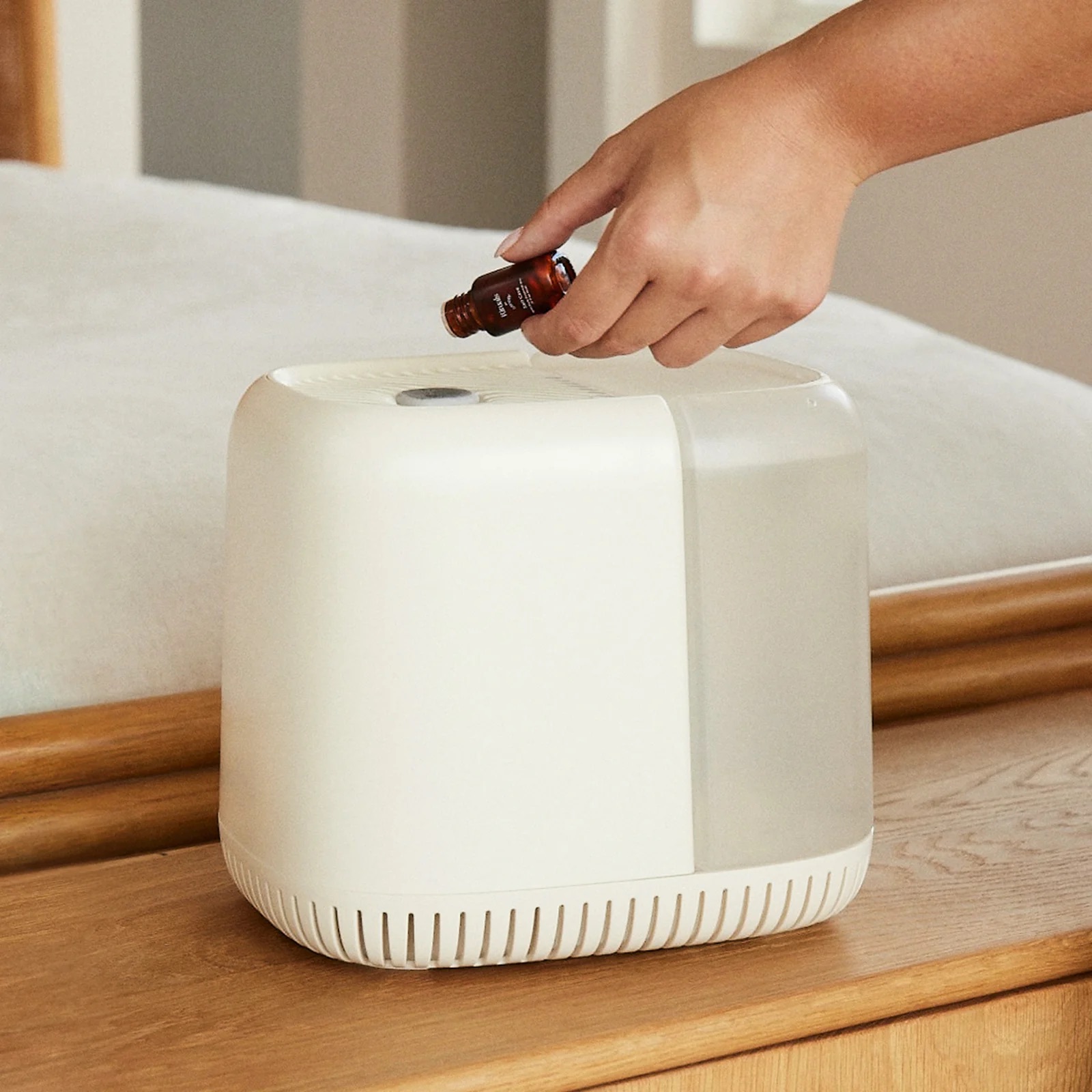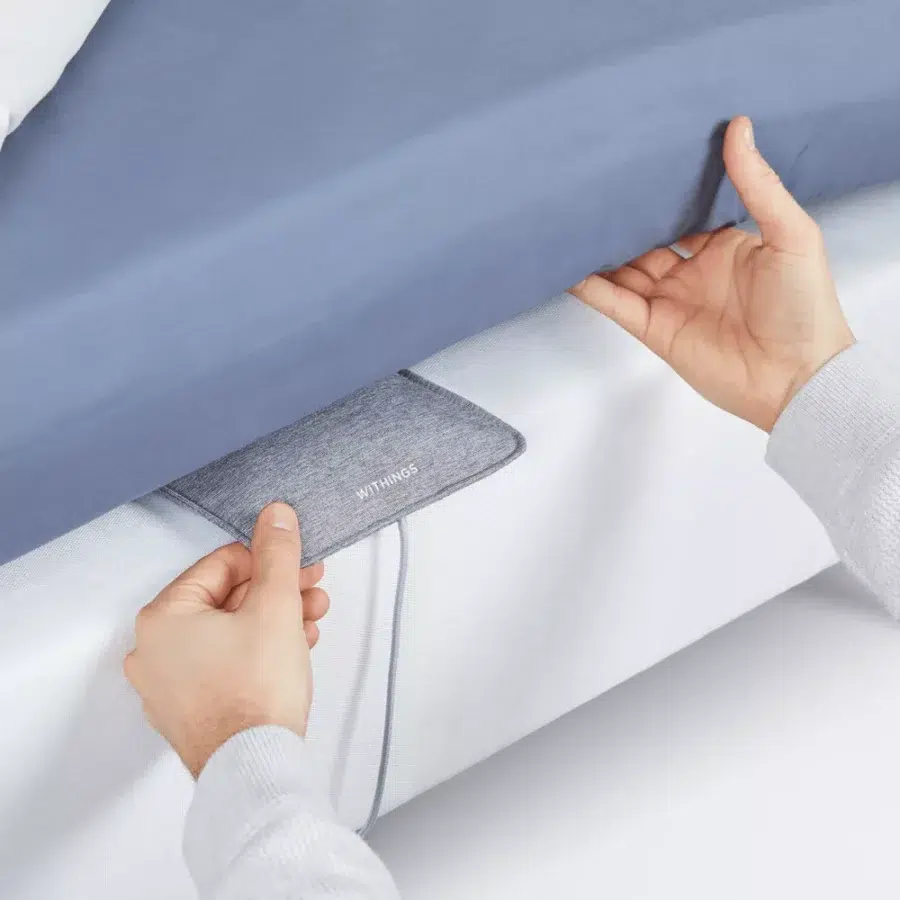
The Withings Sleep Mat — Is It Worth It?
Good Gear editors endorse products we’ve personally researched, tested, and genuinely love. Learn more about our methodology and business model here.
GOOD GEAR RATING — 8/10 STARS
Summary: After 10 days of testing the Withings Sleep Analyzer, we recommend it as a nifty alternative to wearable sleep trackers, for those who want to know more about the quality of their sleep but don’t love the idea of wearing a watch or ring overnight. The sleep data seems incredibly accurate when compared to our subjective experience of our sleep patterns, though we found the app’s recommendations for improving sleep a little sparse.
PROS
- Sleep apnea affects as many as one in five adults, yet is dramatically underdiagnosed. The Withings Sleep Analyzer provides extremely accurate insights into whether you may be suffering from regular sleep apnea beyond the healthy range from the comfort of your own home.
- The handy sleep mat also provides a ton of important sleep metrics, which are communicated directly to the Withings app for you to read in the morning
- The Sleep Analyzer is a non-wearable, non-invasive sleep tracker that you can forget about once you’ve slid it under your mattress, and it’s compatible with the vast majority of mattresses and bed frames
CONS
- The Withings app could do with providing quite a few more tips for how to improve each sleep metric, though knowing in which areas you can improve is an important first step
- Our overall sleep score seemed too high based on some of the less-than-ideal scores we received in specific metrics
- All sleep trackers can cause you to become overly dependent on them and obsessive about your results, so it’s best to treat a product like the Sleep Analyzer as a complement to your overall health rather than the be-all and end-all — and to take your results with a grain of salt
“Your individual sleep data can then help you determine how to improve your overall sleep quality, and therefore your health in general.”
Sleep trackers of all shapes and sizes have been so popular in recent years that even Prince Harry has been spotted out and about proudly sporting an Oura smart ring — a wearable tracker that also measures fitness, stress, and health factors. Other popular options include Fitbits, Apple Watches, or more specific sleep trackers such as the WHOOP or SLEEPON’s Go2sleep device. While the data points each of these devices measure may differ somewhat, sleep trackers are great in general for people experiencing symptoms of low-quality sleep, whether during the night or throughout the day. Your individual sleep data can then help you determine how to improve your overall sleep quality, and therefore your health.
I was initially attracted to the idea of a sleep tracker for finding out what might be behind my ongoing fatigue, which had been bothering me for months — despite my getting a solid, uninterrupted eight hours of sleep almost every night. But for those like me who feel weird about wearing a sleep tracker on their person for any reason — even if it is just at night — an under-the-mattress mat like the Sleep Analyzer from Withings provides a nifty, and frankly scarily accurate, alternative.
About Withings and The Sleep Analyzer
Withings was founded in 2008 by a prolific French entrepreneur, Éric Carreel, with a mission to improve users’ overall health by empowering them with the data they need to care for themselves in an ongoing manner, and help prevent health issues in the long run. Aside from their popular sleep tracking mat, Withings also carries a range of devices designed to measure broader health metrics, such as smart watches, scales, blood pressure monitors, and thermometers. The Sleep Analyzer was developed in collaboration with sleep physicians at the Hôpital Béclère in Paris, France, in an effort to help identify cases of sleep apnea, a condition which is estimated to affect one in five adults and yet often goes drastically underdiagnosed. To do this, the device detects the user’s heart rate, breathing, and movement throughout the night, then uses those measurements to collate data that paints a picture of how you slept the night before — as well as compare your sleep over different periods of time.
“The Sleep Analyzer is specifically designed for those looking to find out whether they suffer from sleep apnea (breathing that stops and starts repeatedly while you’re asleep).”
The Sleep Analyzer is specifically designed for those looking to find out whether they suffer from sleep apnea (breathing that stops and starts repeatedly while you’re asleep) and where they fall on the apnea-hypopnea index (AHI), measured in events per hour. Symptoms of sleep apnea can be pretty troublesome throughout the night but especially during the day afterward, according to the National Heart, Lung and Blood Institute. For those of us who share a bedroom, we are often made aware of our nightly symptoms such as snoring or gasping for air by our bedmates. Still, many people unknowingly suffer from obstructive sleep apnea syndrome (OSAS) either because they don’t recognize the behavior at all or because they’re unaware of the severity of the condition.
“The mat measures your time spent asleep, plus the depth and regularity of your slumber, how long it takes you to fall asleep and get up, whether you had any sleep interruptions, as well as your heart rate and any snoring.”
In a study that looked at the clinical diaries of 4,659 patients, researchers found that only 0.26% self-reported as suffering from sleep apnea, but in looking at the much higher prevalence of other, potentially related symptoms in these patients, the study’s writers hypothesized that a much higher proportion of them might be suffering from undiagnosed sleep apnea after all. Daytime symptoms, according to the National Institutes of Health, include fatigue, dry mouth, headaches, and sexual dysfunction, but the authors of the study felt that the symptoms of hypertension, gastro-esophageal-reflux-disease, and gastritis they found in patients’ clinical diaries might well be related to undiagnosed sleep apnea. Worryingly, when experienced over an extended period of time, obstructive sleep apnea can be “associated with cardiovascular morbidity and mortality,” according to a second study.
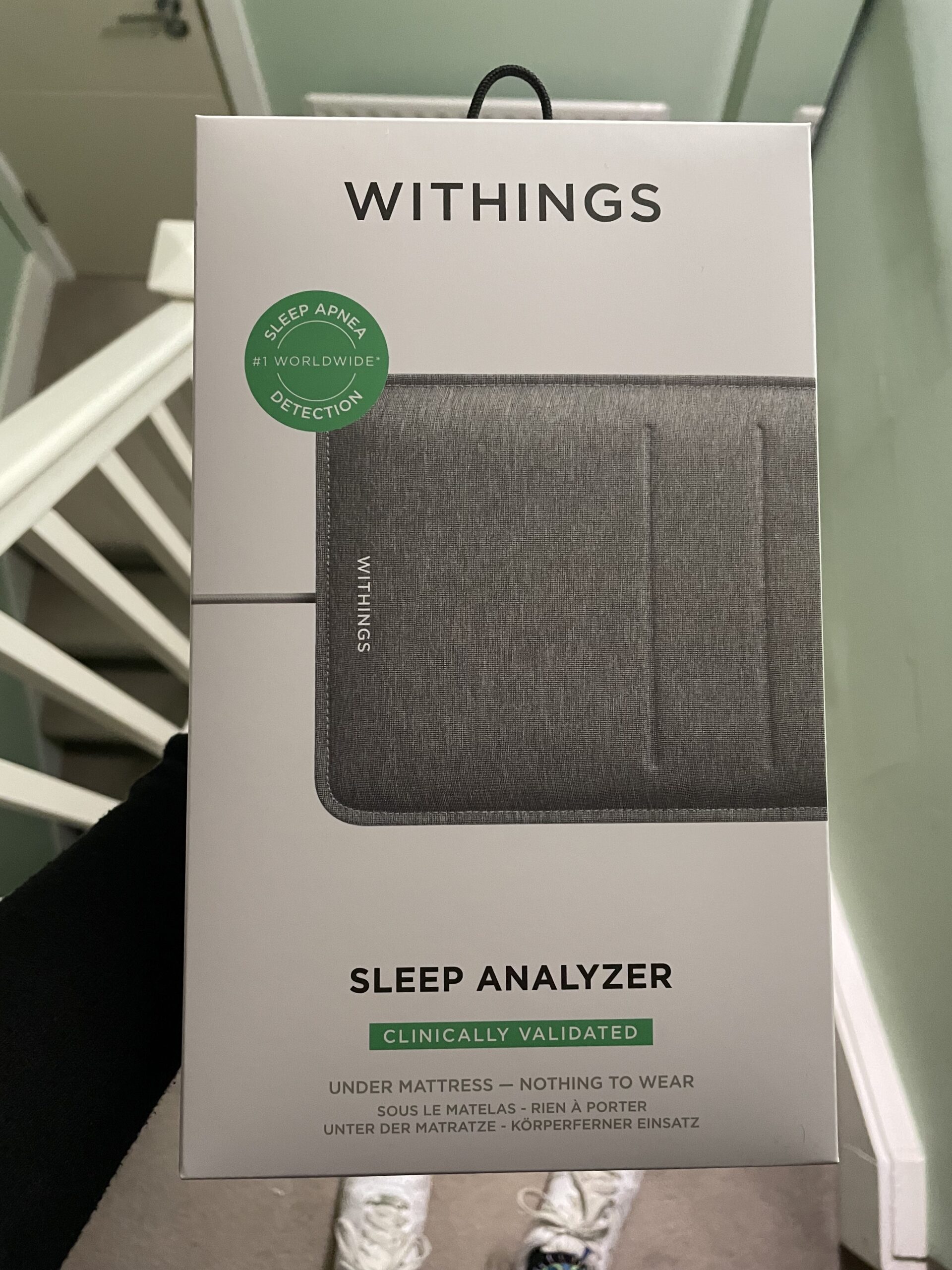
But Withings doesn’t just track for sleep apnea — the mat also measures your time spent asleep, plus the depth and regularity of your slumber, how long it takes you to fall asleep and get up, whether you had any sleep interruptions, as well as your heart rate and any snoring. It then communicates all of that information to the Withings app, where you can read a summary of how well you slept, and compare it to the rest of your week and month. You also get assigned a nightly sleep score out of 100, so you can give yourself a pat on the back if you score high (as well as experience the associated health benefits, obviously).
I received a complimentary Withings Sleep Analyzer in order to write this review, but the mat retails at $129.95 from the brand’s website. My first impression when receiving the product was that it was really compact. It comes nicely packaged in a small and fairly light box and definitely doesn’t feel like a super intense medical device or futuristic tech accessory. Inside is a thin mat that weighs just 350 grams, and measures 25 inches by 7.5, about as long as my arm. It has a cord that was comfortably long enough to plug into the wall by my bed.
Setting up the sleep mat
In terms of setup, I struggled a little to do it by myself and would suggest getting someone to help you so you have more freedom of movement. As for me, I held up my mattress with one hand while sliding the mat horizontally under it. It took a bit of repositioning from there to get it to approximately lie under where my chest would be while sleeping. It was a little awkward because my bed frame has wide slats, but Withings gives you plenty of options for how to work with a slatted frame, which I appreciated. As for which mattresses are compatible with this device, the Analyzer will work great with pretty much any type (spring, latex, foam…) but will not work with water or air mattresses.
Once that was done, it was time to set up the app so it would receive information recorded by the mat every morning. Unfortunately, the first night I tried it, I wasn’t able to get the app to hook up to my mat. Troubleshooting instructions said to try a factory reset, but that sounded complicated and I figured I’d try again the next day instead. Weirdly (but who am I to question it), the setup went totally smoothly the next day and I was able to start recording my sleep stats from then on.
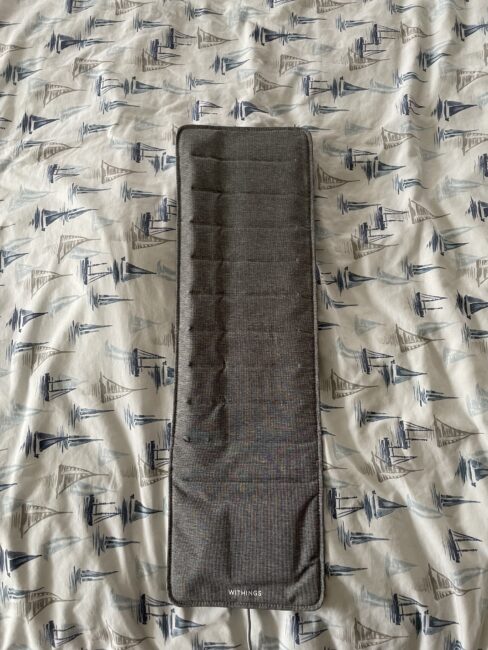
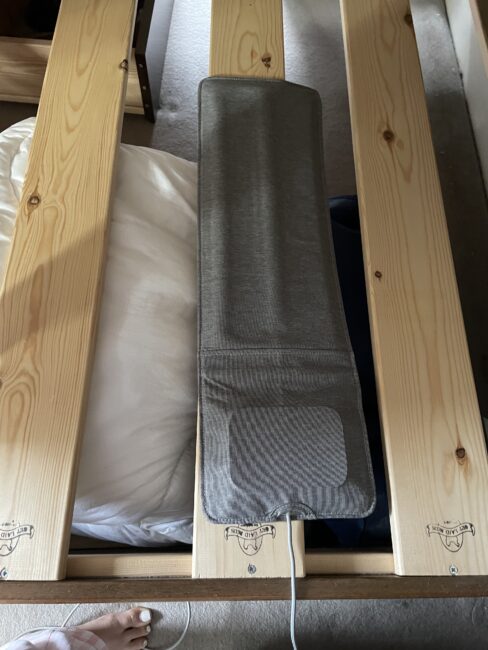
Using the Mat
Over the 10 nights that I tested the mat to write this review, I received remarkably similar results. My sleep apnea was almost always in the normal to mild range — that is, between 0 and 15 events per hour. The only time I scored in the moderate range (between 15 and 30) was on a Saturday night after I’d had quite a bit of wine at a dinner party. Based on that measurement, the app informed me that “moderate sleep apnea should be monitored by a physician” and that I should take the STOP-Bang questionnaire to estimate my risk of qualifying for an obstructive sleep apnea diagnosis. The questionnaire — which is often used by health practitioners to screen patients for sleep apnea — uses the gender, age, weight, and height you provide to the app while setting up, then asks you a series of questions about whether you snore, suffer from fatigue, or have high blood pressure, among other indicators. If you’re worried about sleep apnea, you can use the results you receive in the questionnaire to show your doctor.
Over the testing period, I scored highly on most sleep measures, sleeping for seven or eight hours, typically going to bed and getting up at around the same times every night, and my sleep had few to no interruptions. However, the depth of my sleep was average or bad every night, with the app often telling me, “Seems like you did not fully recover, as only a small part of last night was spent in deep and REM sleep,” or, “Your night did not seem very restorative.”
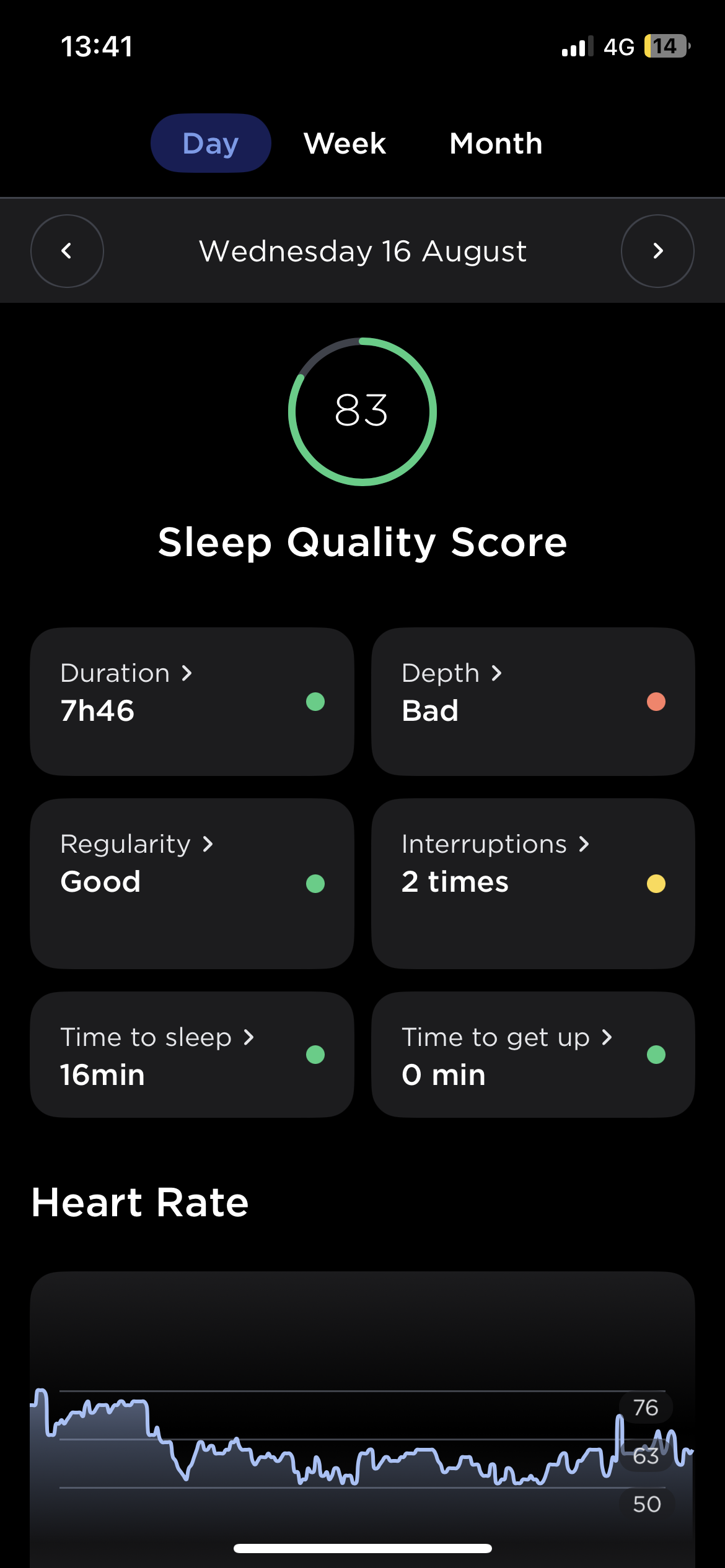
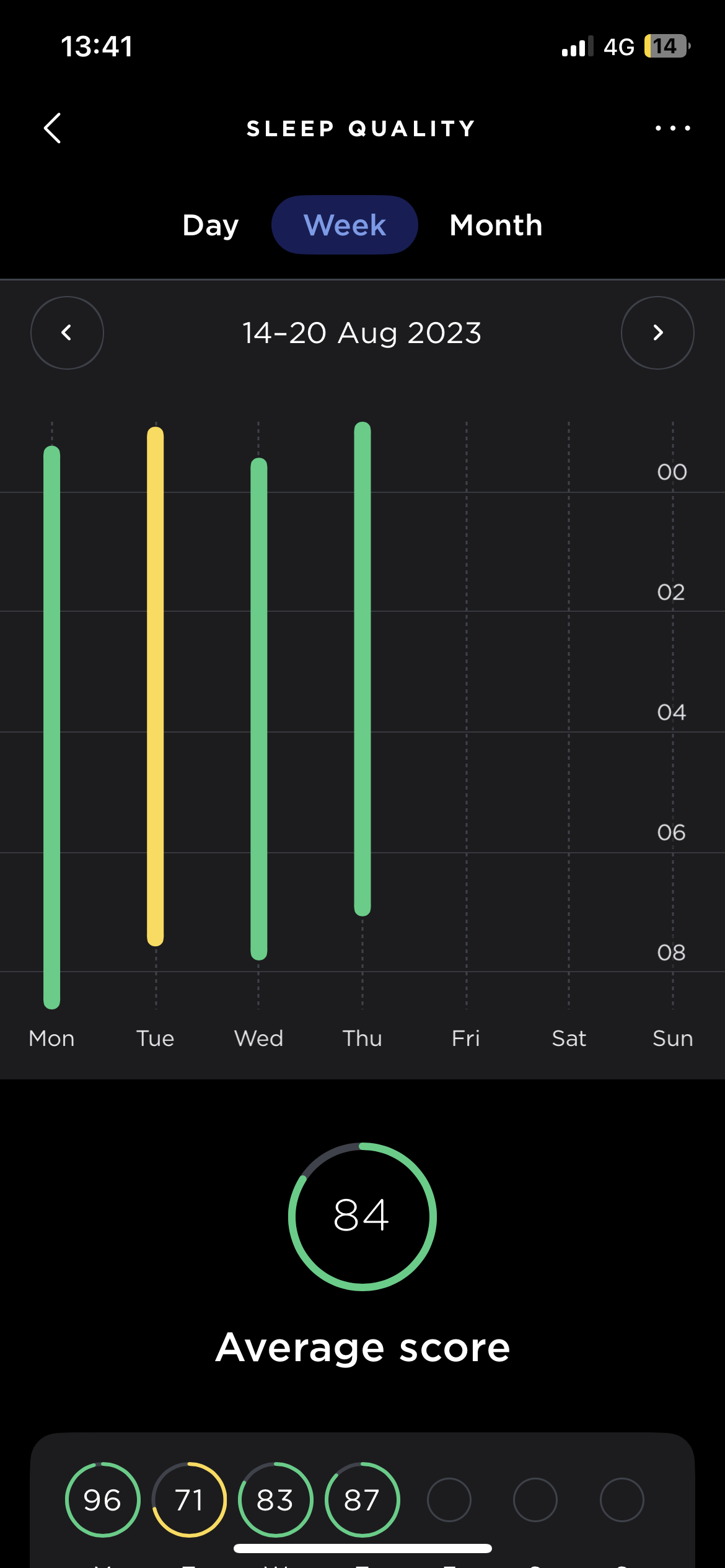
Finding this out was deeply validating, because I’ve been feeling fatigued and fuzzy for a long time without knowing why. I don’t wake up feeling rested and it starts me off on the wrong foot for my day, so being able to see that there was an explanation for this was incredibly helpful. Unfortunately, the only advice the app gave me about this was to go to sleep at the same time every night — which, as previously mentioned, I was already doing. Ergo: unhelpful.
My other complaint here is that, despite not feeling rested in the morning, I received a high sleep score overall each day — usually somewhere in the mid-80s, coded as a “green” (with the other options being yellow or red, as in traffic lights). When looking at my stats as compared to my sleep score on one average night, Dr. Nerina Ramlakhan, a UK-based sleep expert and physiologist, wasn’t convinced. “’In my opinion, the sleep score is too high given that the stats are suboptimal,” she says, adding that it’s possible the tracker scores on the higher side, and advising that I continuously ask myself how I feel after a night’s sleep rather than relying entirely on the data. I think this is great advice when using a sleep tracker generally: They’re definitely very useful and informative for basic insight into your sleep patterns, but it’s always important to also monitor how you feel. You know your own health better than anyone or anything else!
“While I haven’t personally tested this tracker, I am in favor of tracking your sleep if you take the data with a small(ish) pinch of salt.”
– Dr. Nerina Ramlakhan, sleep expert and physiologist
Dr. Ramlakhan expresses a similar sentiment. “’While I haven’t personally tested this tracker, I am in favor of tracking your sleep if you take the data with a small(ish) pinch of salt,” she says. “Getting to understand your unique relationship with sleep can be helpful and even reassuring. However, excessive preoccupation with the data leading to ‘trying too hard’ to get a good night’s sleep and ‘perfect’ data, can in itself cause the sleep problem known as orthosomnia.” She adds that a good sleep tracker should help you interpret the data, give you lots of actionable tips for improving your sleep based on your personal stats, and let you know when to consult a medical professional. I found Withings did well on two of these points, but I really needed more in-depth advice from an expert on to how to get deeper sleep. I now know what my problem is, but I’m no closer to understanding how to make it better.
“Sleep apnea can greatly impact your short-term and long-term quality of life, but is hard to diagnose without resorting to a controlled sleep study—especially if you don’t have obvious symptoms such as snoring.”
As you might have gathered by now, sleep apnea can greatly impact your short-term and long-term quality of life, but is hard to diagnose without resorting to a controlled sleep study — especially if you don’t have obvious symptoms such as snoring. The genius of the Withings Sleep Analyzer, then, is that you get to do your own individualized sleep “study” at home to easily find out whether your sleep apnea is anything to look further into. Obviously, while the app gives you some lifestyle tips to help you improve your sleep, this is only a first step and you should consult a medical professional to find out how you can remedy sleep apnea.
For Dr. Naheed Ali, a physician and lead writer at Sleep Bubble, there are definite pros and cons to mats like this. “The accuracy of the data these mats churn out has left quite a few folks wide-eyed. It’s as if the mat has this uncanny knack for picking up every detail,” he notes, adding that some users do find the data differs from that from their Apple Watch or Fitbit. The expert cautions that it does mean another piece of tech tracking your data, in case privacy is a concern for you (obviously, Withings has an extensive privacy policy which should at least reassure you somewhat on that front). Like Dr. Ramlakhan, he also feels tracking your sleep too closely could become obsessive — and create yet another reason to check your phone.
All in all, if, like me, you’re suffering from daytime fatigue or other symptoms that may point to less-than-ideal sleep, I would absolutely recommend the Withings sleep mat as an easy-to-use, non-wearable sleep tracker. I also find its price point very reasonable — more of an investment than a basic Fitbit, but far more affordable than an Oura ring, which starts at $299. The Sleep Analyzer provides tangible, accurate data that can help you understand how you might go about getting better sleep, or that you can show to your doctor if you’re particularly worried. Just don’t make it your be-all and end-all.
Iris Goldsztajn is a Contributing Editor at Good Gear and The Good Trade. She is a Paris-born, LA-educated and London-based freelance writer and editor, working across health and wellness, celebrity, fashion, beauty and more. She has written for the likes of Marie Claire, British Vogue, InStyle, Refinery29, Shape, SELF and Cosmopolitan, and has a particular interest in holistic mental wellness.
This review is not sponsored and includes the author’s personal experience. Good Gear editors were gifted this product. Read more about our review process here.

